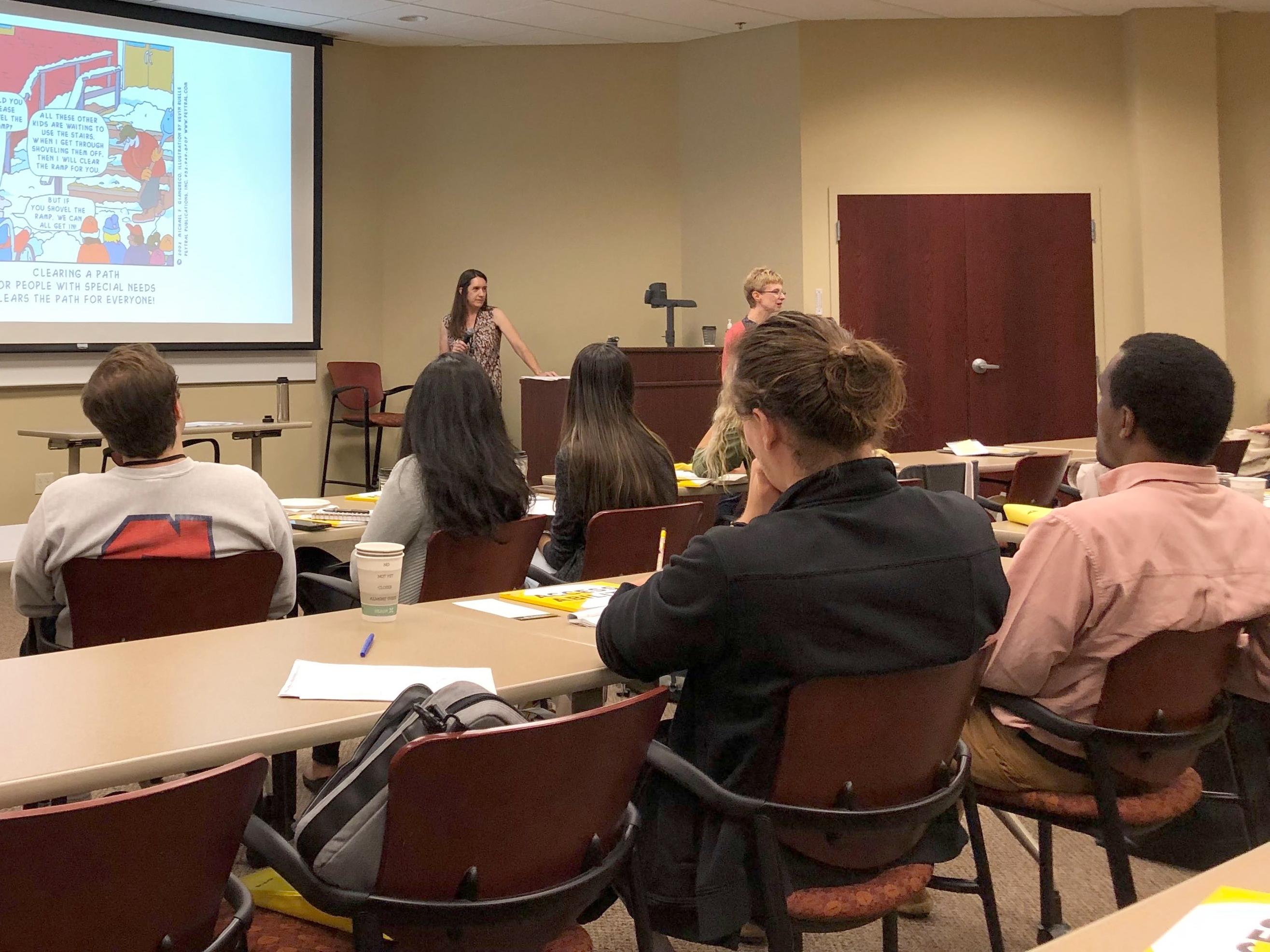SUNY Oswego Workgroup on Accessibility Practice members (standing from left) Kate Percival and Rebecca Mushtare, shown during a previous year conference presentation, are part of the team coordinating next week's second annual Accessibility Challenge.
The Workgroup on Accessibility Practices will host its second Accessibility Challenge Jan. 10 to 14 to educate and engage the campus community in digital accessibility practices.
Students, faculty and staff are encouraged to participate in the challenge to ensure the digital content created by all campus members is accessible to everyone.
The challenge
This year, participants will be able to choose from two different levels of difficulty: the Beginner Level for those who want to become more comfortable with the basics, and the Advanced Level for those who want to dive deeper.
The Beginner level sessions will include:
- Properly styling headings
- Using master slides
- Writing descriptive hyperlinks
- Writing text equivalents for images
- Using automated accessibility checkers
The Advanced level sessions will cover:
- Accessible emails
- Color and contrast
- Providing captions for videos
- Accessible tables and math notations
- Improving PDF accessibility
Each challenge is structured with flexibility and autonomy in mind. Individuals can participate on their own schedule (between 30 and 60 minutes per day) or synchronously with campus accessibility champions.
The workgroup designed the project to meet participants where they are and to ensure that they get the most out of the challenge that they can.
“Folks will learn several simple steps that will allow them to create content that will be usable by anyone. This means that if one is informed of an accommodation requirement there isn’t any extra work that needs to happen — the content is already accessible,” said Casey Raymond, workgroup co-chair and associate professor of chemistry. “Sure, there are more advanced topics and some content requires more effort to make it accessible, but we want people to start simple and be aware of what accessible means.”
Why accessibility at Oswego
Because disabilities are common yet can be invisible, creating accessible digital content is paramount to the workgroup.
“According to the CDC, about 1 in 4 people have a disability. Not all disabilities can be seen, and campus personnel are not required to disclose that information,” said Kate Percival, workgroup member and web/digital content coordinator for SUNY Oswego. “People consume digital content in a variety of ways, using a wide array of devices. We never really know the barriers that someone may face or the methods they use to consume content. It's in everyone's best interest to make materials as inclusive and accessible as possible.”
As many aspects continue to move towards existing and learning in virtual spaces, digital accessibility is becoming more important than ever. SUNY Oswego has formed several workgroups that address accessibility, including the Digital Accessibility Steering Committee, Web Steering Committee, Remediation Team and the Faculty Accessibility Fellows Program.
Rebecca Mushtare, associate dean of graduate studies and a member of the SUNY Empowering Students with Disabilities Task Force, notes that last year's 10-day challenge resulted in an increased number of advocates finding their way into many more campus spaces. Similarly, the hope this year, and years to come, is that more advocates are made, more students are empowered and involved, and that colleagues begin to hold each other accountable when it comes to accessibility on campus.
“Involving students in our workgroup and in the planning of our resources and trainings available will be key to our future growth and to the sustainability of our efforts as they scale,” Mushtare said. “I hope for us, and for our society, that more and more students learn basic accessibility skills and build accessibility into everything that they do from the start –- and demand that of their peers, future employers and of the communities they are embedded within. We all need to hold each other accountable for a more accessible future.”
To learn more about the Accessibility Challenge or the Workgroup on Accessibility Practices, visit the Digital Accessibility website.




